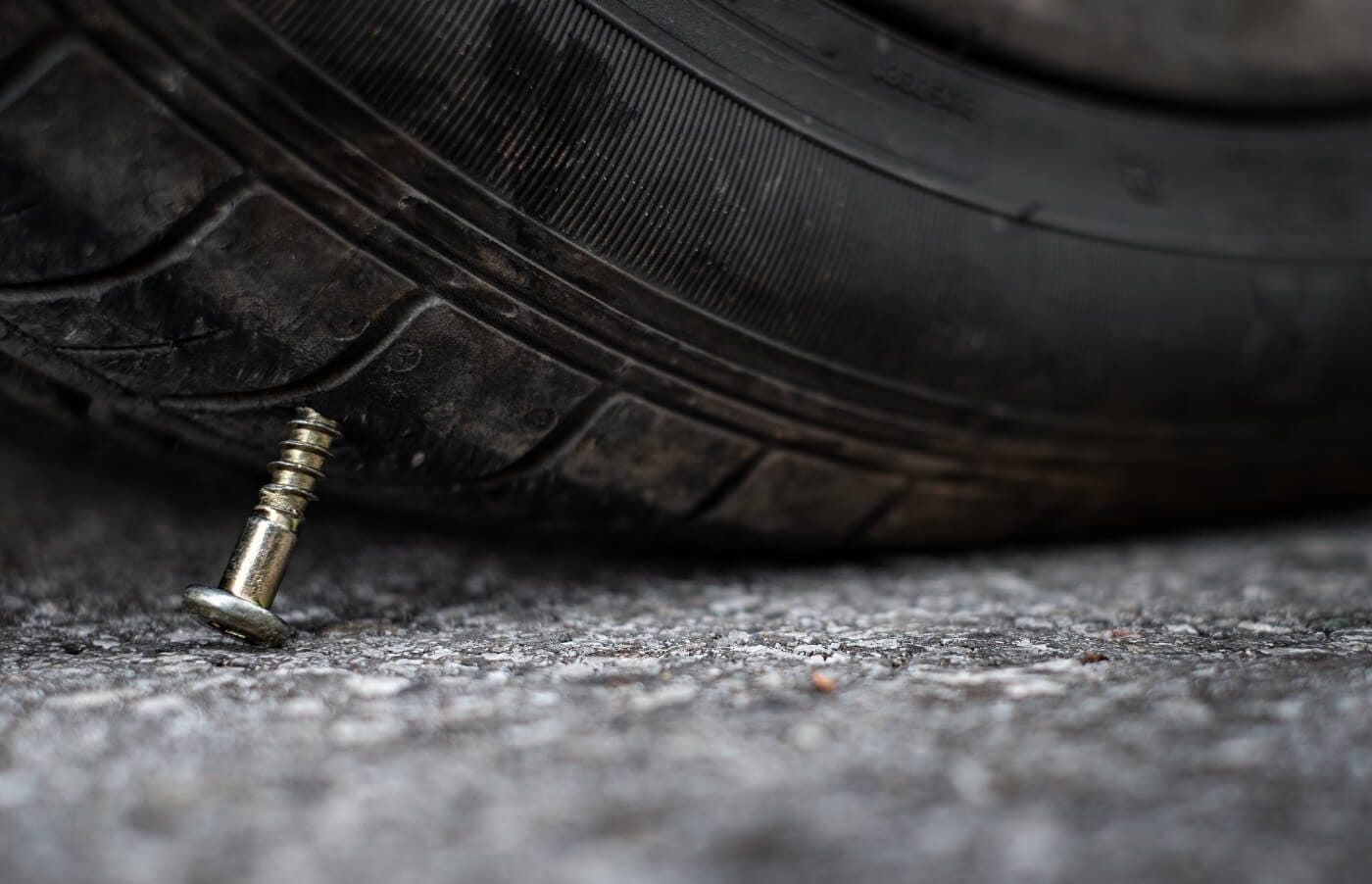Driving with a punctured tire isn’t just inconvenient—it’s downright dangerous. Imagine this: you’re cruising along when suddenly, your tire gives out. The consequences can be scary, from costly repairs to life-threatening accidents. Let’s explore why driving on a punctured tire is a risk you should never take.
Why a Punctured Tire is More Than Just Flat
Think of your tire like a balloon. A puncture is like a tiny pinprick—air slowly escapes, compromising the tire’s strength and shape. As you continue driving, the tire increasingly loses pressure, affecting your car’s stability and your ability to control it.
Here’s what’s at stake:
- Blowouts: Driving on a flat, especially at speed, dramatically increases the risk of a blowout. This sudden and violent burst can send your car swerving, potentially leading to a serious accident.
- Loss of Control: A deflating tire affects braking, steering, and overall vehicle stability. This is especially dangerous in emergency situations where quick maneuvers are essential.
- Costly Damage: The added stress and friction from driving on a flat can damage your tire beyond repair, ruin your wheel rim, and even harm your car’s suspension system. These repairs aren’t cheap.
How Far Can You Go? The Short Answer: Not Far
You might be tempted to drive a short distance on a flat tire. But there’s no magic number—even a small puncture can quickly escalate into a dangerous situation. Here’s why you should resist the urge:
- Unpredictable Deterioration: Even a slow leak can rapidly worsen, leading to a sudden flat tire when you least expect it.
- Increased Risk at Speed: The faster you drive, the greater the stress on the tire, and the higher the likelihood of a blowout.
- Hidden Damage: Driving on a flat, even for a short distance, can cause internal damage to the tire that’s not immediately visible, making a simple repair impossible.
Run-Flat Tires: A Limited Safety Net
Some vehicles come equipped with run-flat tires, designed to withstand punctures for a short distance at reduced speeds. While they offer some peace of mind, they’re not a free pass to ignore a flat. Remember:
- Limited Range: Run-flats are designed to get you to a safe location for a tire change, not to continue driving as if nothing happened. They typically allow for up to 50 miles of driving at a reduced speed.
- Vehicle Specific: Not all cars have run-flat tires. Check your owner’s manual to understand your vehicle’s capabilities and any limitations.
What to Do When You Get a Flat Tire: Safety First
A flat tire can be stressful, but knowing what to do keeps you safe. Here’s a step-by-step guide:
- Safety First: As soon as you suspect a flat—pull over to a safe spot away from traffic. Turn on your hazard lights to alert other drivers.
- Assess the Situation: Check your tire for punctures. If you have a spare tire and the necessary tools, you can attempt to change it yourself.
- Call for Help: If you’re uncomfortable changing a tire or lack the proper equipment, don’t hesitate to call for roadside assistance.
The Bottom Line: Don’t Gamble with Your Safety
Driving on a punctured tire is never worth the risk. The potential consequences—blowouts, accidents, and expensive repairs—far outweigh the inconvenience of addressing the issue immediately. Remember, a little caution goes a long way on the road!
- Unlock Elemental 2 Secrets: Actionable Insights Now - April 2, 2025
- Lot’s Wife’s Name: Unveiling the Mystery of Sodom’s Fall - April 2, 2025
- Photocell Sensors: A Complete Guide for Selection and Implementation - April 2, 2025
















